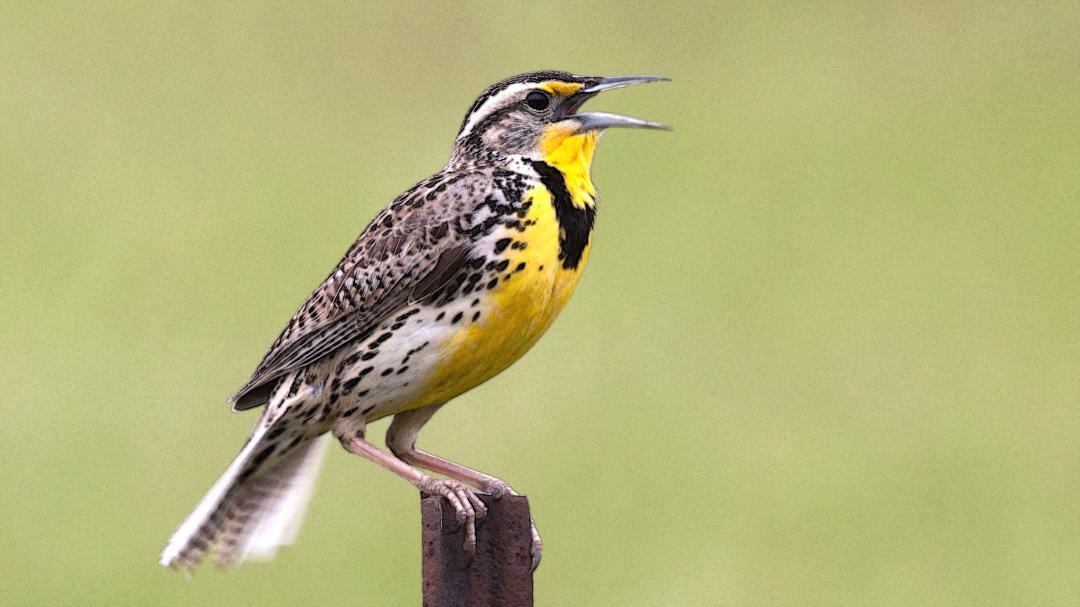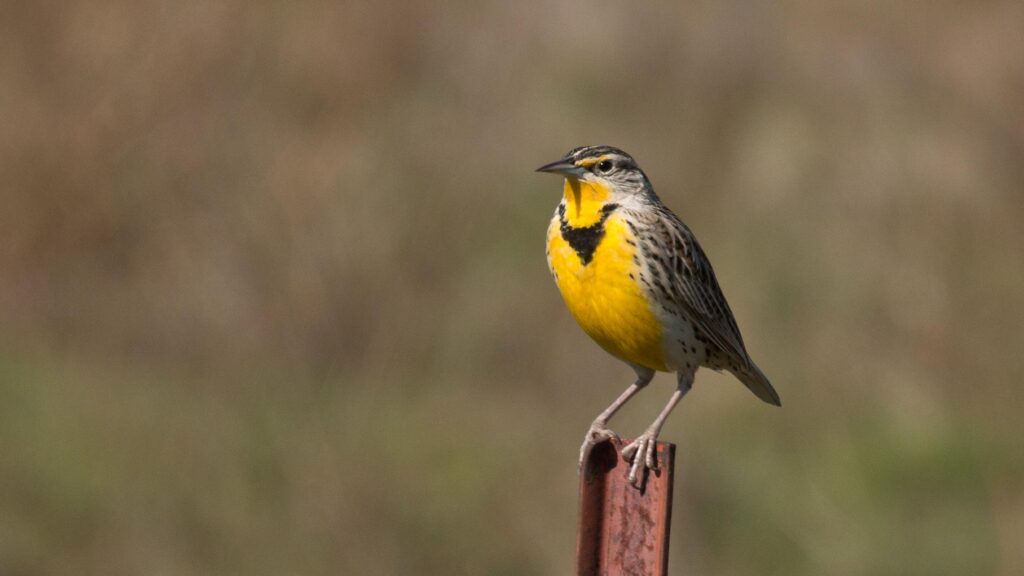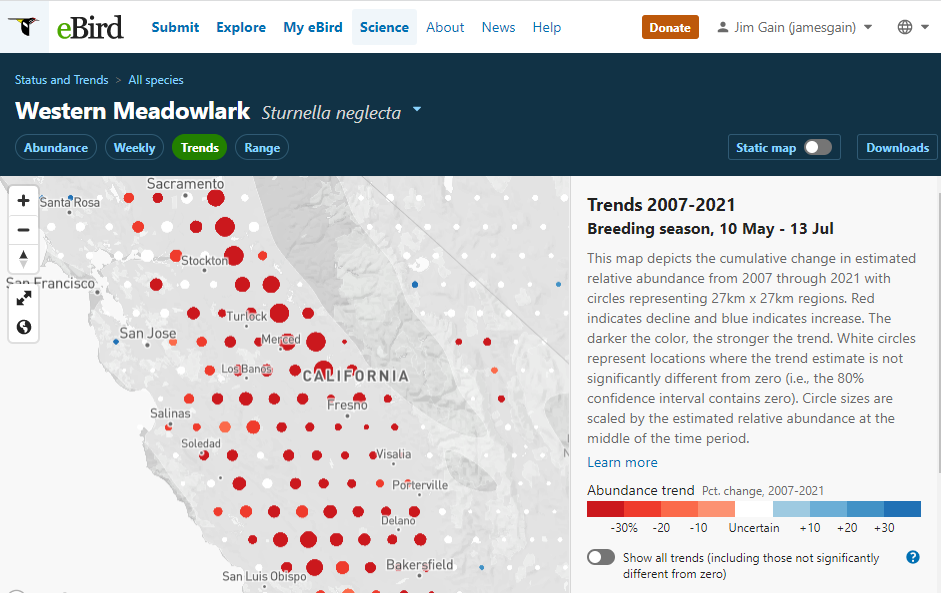We’re proud to post #13 in Jim Gain’s Learn 100 Common Valley Birds series. The Western Meadowlark is actually species #18 in the series; some posts feature more than one species.
Introduction
The buoyant, flutelike melody of the Western Meadowlark ringing out across a field can brighten anyone’s day. The Western Meadowlark is a Common Year-round Resident throughout the open country of the San Joaquin Valley. The Western Meadowlark is not a lark (Family Alaudidae) but is related instead to New World blackbirds and troupials (Family Icteridae).

Appearance
This colorful member of the blackbird family flashes a vibrant yellow breast crossed by a distinctive, black, V-shaped band.
Distribution
The Western Meadowlark is one of our most abundant and widely distributed grassland birds. It inhabits most open country of both natural and planted grasslands of the valley floor.
Cool Fact
John James Audubon gave the Western Meadowlark its scientific name, Sturnella (starling-like) neglecta, claiming that most explorers and settlers who ventured west of the Mississippi after Lewis and Clark had overlooked this common bird.
Conservation Status
Although Western Meadowlarks are numerous, their breeding populations declined approximately 0.9% per year between 1966 and 2019, resulting in a cumulative decline of about 37%, according to the North American Breeding Bird Survey.
The graph below shows the Central Valley population trends between 2007 and 2021. The larger the red circle, the greater the decline in numbers.
Declines may be due, in part, to conversion of grassland breeding and wintering habitat for housing and agricultural uses. Other factors affecting Western Meadowlark populations may include pesticides, habitat degradation due to invasive plant species, and fire suppression that alters native grasslands. (From All About Birds.com)



